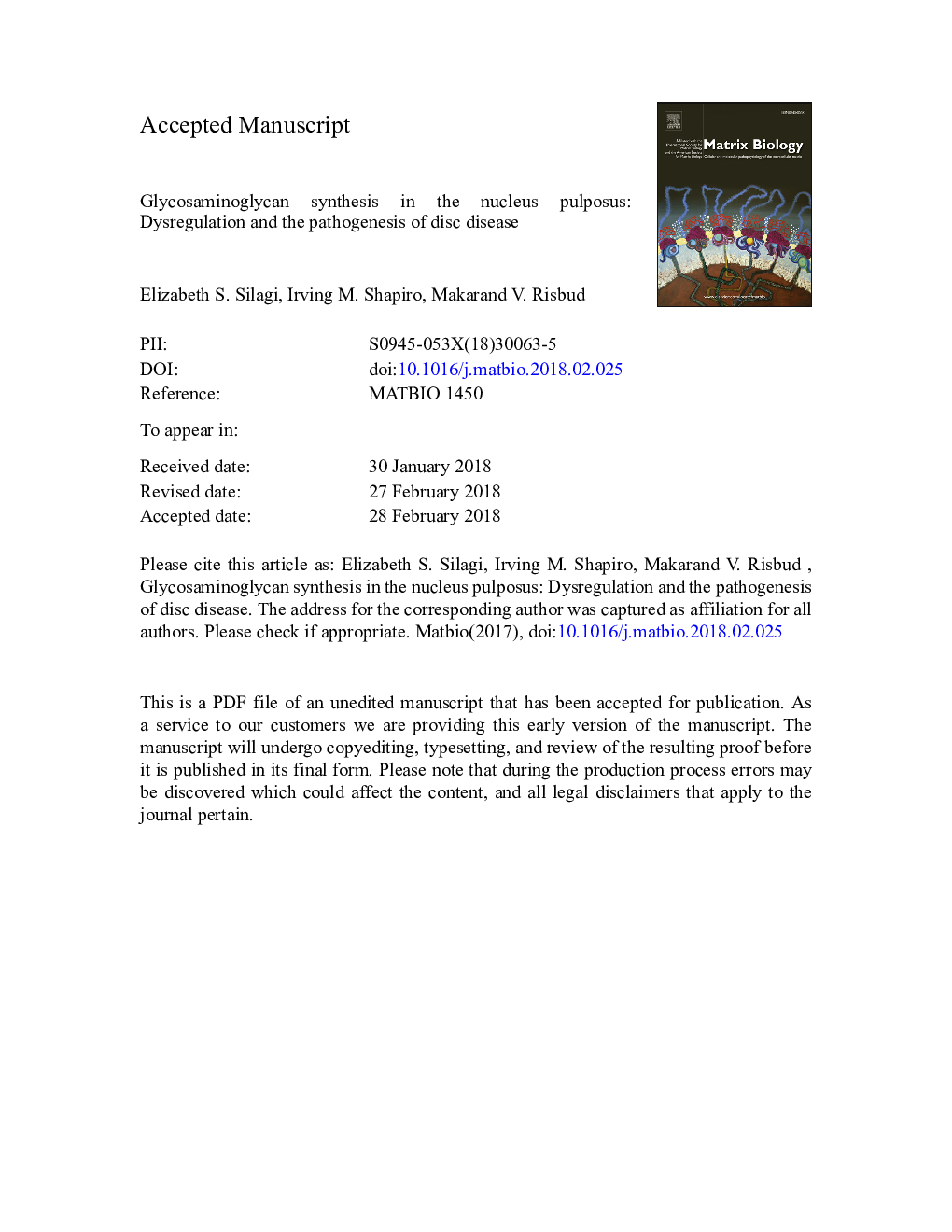| Article ID | Journal | Published Year | Pages | File Type |
|---|---|---|---|---|
| 10157711 | Matrix Biology | 2018 | 29 Pages |
Abstract
Few human tissues have functions as closely linked to the composition of their extracellular matrices as the intervertebral disc. In fact, the hallmark of intervertebral disc degeneration, commonly accompanying low back and neck pain, is the progressive loss of extracellular matrix molecules - specifically the GAG-substituted proteoglycans. While this loss is often associated with increased extracellular catabolism via metalloproteinases and pro-inflammatory cytokines, there is strong evidence that disc degeneration is related to dysregulation of the enzymes involved in GAG biosynthesis. In this review, we discuss those environmental factors, unique to the disc, that control expression and function of XT-1, GlcAT-I, and ChSy/ChPF in the healthy and degenerative state. Additionally, we address the pathophysiology of aberrant GAG biosynthesis and highlight therapeutic strategies designed to augment the loss of extracellular matrix molecules that afflict the degenerative state.
Keywords
ChPFChSyMothers against decapentaplegic homolog 3XT-1TGF-βChondroitin synthaseTonEBPSLRPproteoglycansECMSmad3HIFBMP-2MAPKCEPHyaluronic acidIntervertebral disc degenerationCartilaginous endplateTransforming growth factor βIntervertebral discchondroitin polymerizing factorHypoxia Inducible FactorAnnulus fibrosusExtracellular matrixNucleus pulposusHeparan sulfateProteoglycanbone morphogenetic protein 2mitogen activated protein kinase
Related Topics
Life Sciences
Biochemistry, Genetics and Molecular Biology
Cancer Research
Authors
Elizabeth S. Silagi, Irving M. Shapiro, Makarand V. Risbud,
